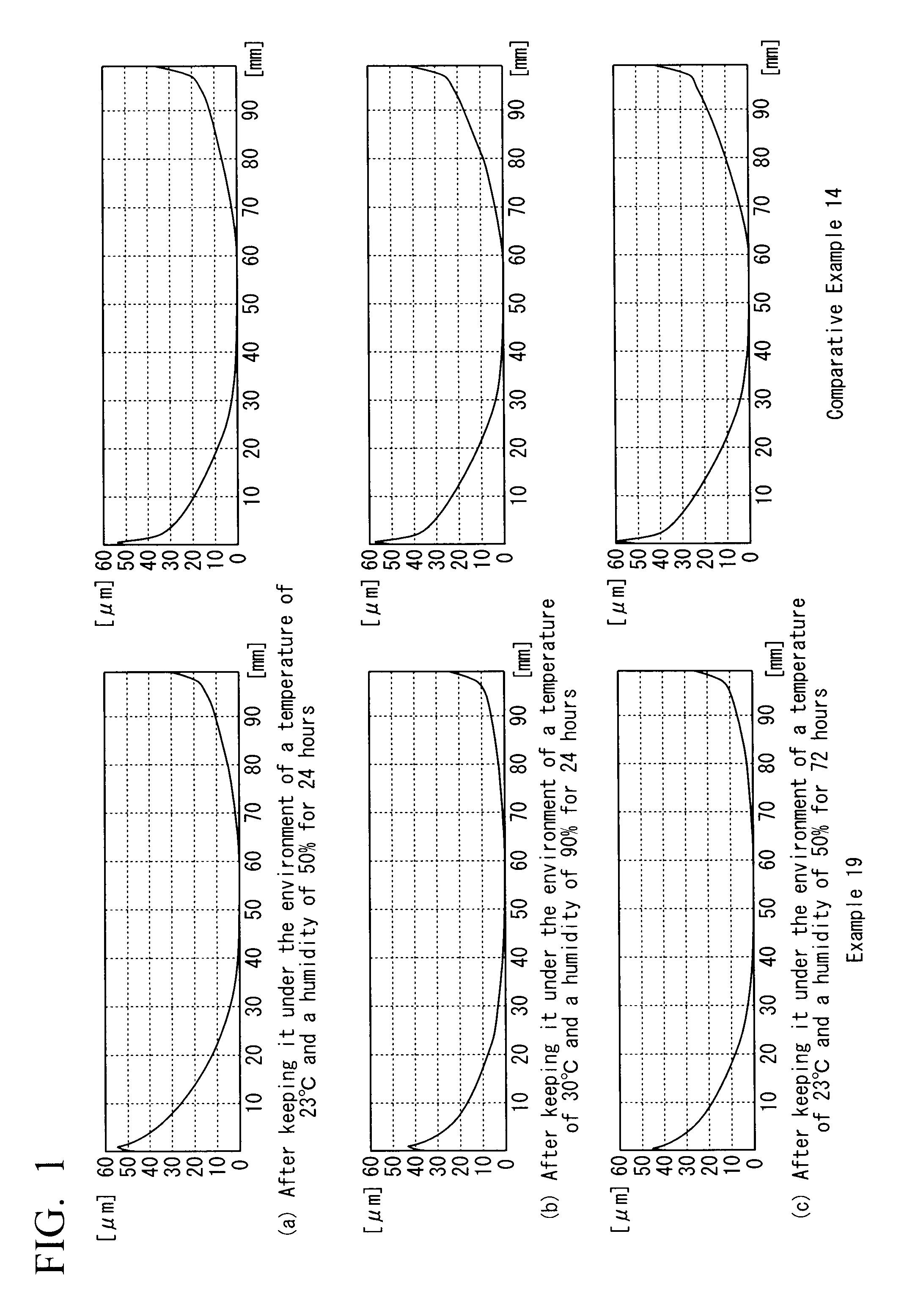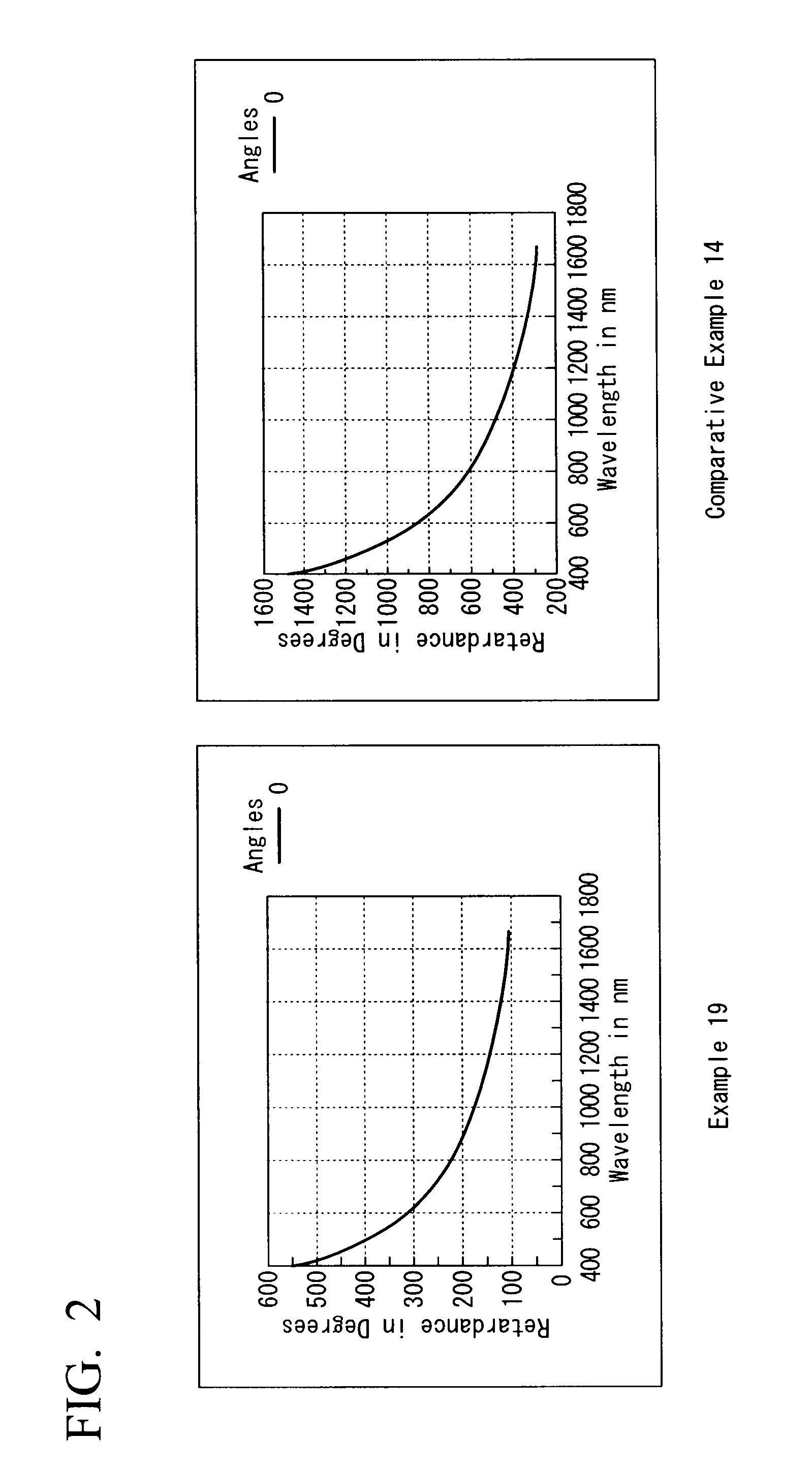Fluidity-improving agent, aromatic polycarbonate resin composition, and shaped article thereof
- Summary
- Abstract
- Description
- Claims
- Application Information
AI Technical Summary
Benefits of technology
Problems solved by technology
Method used
Image
Examples
production example 1
[0213]Production of the Polymer (A-1)
[0214]To a separable flask equipped with a thermometer, a nitrogen introducing pipe, a condenser, and a stirring device, the following emulsifier mixture was charged and stirred, and the flask was heated to the inside temperature of 60° C. under a nitrogen atmosphere.
[0215]Emulsifier Mixture:
Phosphanol RS-610Na (an anion emulsifier,1.0 part manufactured by Kao Corporation)Deionized water293 parts
[0216]Then, the following reducing agent mixture was introduced into the separable flask.
[0217]Reducing Agent Mixture:
Ferrous sulfate0.0001partDisodium ethylenediaminetetraacetate0.0003partRongalit0.3partDeionized water5parts
[0218]The following monomer mixture was dropped into the separable flask over the period of 180 minutes, and then, the contents were stirred for 60 minutes and polymerization was finished to obtain a latex of the polymer (A-1).
[0219]Monomer Mixture:
Styrene55.0 partsα-Methyl styrene24.0 partsPhenyl methacrylate20.0 partsGlycidyl methac...
production example 2
[0223]Production of the Polymer (A′)
[0224]The same procedure as in Production Example 1 was carried out except that the monomer mixture was changed to the following composition to obtain the polymer (A′).
[0225]Monomer Mixture:
Styrene50.0 partsα-Methyl styrene24.0 partsPhenyl methacrylate20.0 partsGlycidyl methacrylate6.0 partn-Octyl mercaptan0.5 partt-Butyl hydroperoxide0.2 part
[0226]The rate of polymerization of the polymer (A′) was 95%, (Mw) was 52,000, (Mn) was 23,000, and the amount of epoxy group was 0.35 mmol / g.
[0227]The (dv) of the polymer (A′) in the aromatic polycarbonate resin was 0.4 μm, and the polymer (A′) was incompatible with the aromatic polycarbonate resin.
production example 3
[0228]Production of the Polymer (B-1)
[0229]To a separable flask equipped with a thermometer, a nitrogen introducing pipe, a condenser, and a stirring device, the following emulsifier mixture was charged and stirred, and the flask was heated to the inside temperature of 60° C. under a nitrogen atmosphere.
[0230]Emulsifier Mixture:
Pelex SS-L (an anion emulsifier, manufactured3.0 part by Kao Corporation)Deionized water291 parts
[0231]Then, the following reducing agent mixture was introduced into the separable flask.
[0232]Reducing Agent Mixture:
Ferrous sulfate0.0001partDisodium ethylenediaminetetraacetate0.0003partRongalit0.3partDeionized water5parts
[0233]The following monomer mixture was dropped into the separable flask over the period of 180 minutes, and then, the contents were stirred for 60 minutes and polymerization was finished to obtain a latex of the polymer (B-1).
[0234]Monomer Mixture:
Phenyl methacrylate100.0 parts 3-Mercaptopropionic acid1.0 partt-Butyl hydroperoxide0.2 part
[023...
PUM
| Property | Measurement | Unit |
|---|---|---|
| Percent by mass | aaaaa | aaaaa |
| Percent by mass | aaaaa | aaaaa |
| Percent by mass | aaaaa | aaaaa |
Abstract
Description
Claims
Application Information
 Login to View More
Login to View More - R&D
- Intellectual Property
- Life Sciences
- Materials
- Tech Scout
- Unparalleled Data Quality
- Higher Quality Content
- 60% Fewer Hallucinations
Browse by: Latest US Patents, China's latest patents, Technical Efficacy Thesaurus, Application Domain, Technology Topic, Popular Technical Reports.
© 2025 PatSnap. All rights reserved.Legal|Privacy policy|Modern Slavery Act Transparency Statement|Sitemap|About US| Contact US: help@patsnap.com


